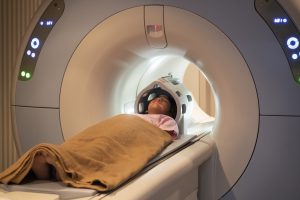
[Reprinted: HCB News, 9-8-2020]
Today, Magnetic Resonance (MR) is an essential part of the radiology department’s diagnostic capabilities. This makes it easy to forget how relatively new the technology is, with systems first used in clinical practice only around 40 years ago.
For much of that time, MR represented a trade-off: incredible images, particularly of soft tissues, with no radiation exposure, balanced against long scan times, an uncomfortable experience for patients and the unique challenge of keeping the system’s superconducting magnet cool.
While those perceptions sometimes remain, technology offers progress in real life. Acceleration options are significantly reducing scan times for millions of patients. And unique sealed magnet technology is allowing for helium-free operations.
Meanwhile, healthcare is undergoing two fundamental transformations. First, from a system based on rewarding volume and patient throughput to one focused on value and long-term health outcomes. Second, digitalization, where managing and securing insights from data becomes key, both for the diagnosis and treatment of each patient and for the operational management of the system as a whole.
When envisioning the future of MR, it helps to have a framework. The Quadruple Aim — better health outcomes, lower cost of care, and an improved experience for patients and staff is a great guide; and for MR specifically, we can interpret this as a focus on speed, comfort and confidence.
The need for speed
MR scans are getting faster, with some sequences already being carried out in half the usual time, in routine clinical settings. This newly-free time is being used in different ways by different providers — to increase the number of scans, of course, but also to enable more patient time or expanded scan protocols.
Reducing scan times by applying intelligence to image reconstruction will continue to be an exciting area of innovation, with challenges like the fastMRI image reconstruction challenge organized by Facebook AI Research and NYU Langone Health helping to further advance this field of research.
Making MR a comfortable experience
Patient comfort affects both productivity and clinical outcomes. Smarter workflows, combining innovations like patient-side system controls, removing waste in the process and using machine learning in protocol setup are supporting comfortable and fast scans.
Patient comfort also impacts the quality of diagnosis: if a patient isn’t comfortable there is an increased chance of movement during the exam. Patient sensing technology and supportive algorithms, which are already in use today and will become even more important in the future, measure, autocorrect and thus, positively impact workflow, image quality and diagnostic confidence. As we aim to make MRs smart in the future, standardizing and fully automating workflows will be critical in enabling clinicians to deliver personalized exams for patients.
Enhancing clinical confidence
Applying artificial intelligence in image analysis and reporting, for automated and enhanced clinical decision support, is getting strong traction in MR and other imaging modalities as well. For MR specifically, quantitative techniques, such as MR-STAT, being developed with University Medical Center Utrecht (the Netherlands), are an important area of innovation.
By combining smart acquisition schemes and machine-assisted reconstruction, it’s possible to deliver multiple quantitative MR parameters in one fast single scan. For MR this will be a fundamental shift — from MR as images, to MR as a combination of images and data, resulting in more objective, quantified outcomes, all supporting a definitive diagnosis for each patient.
Applying the industry’s innovation power through the lens of the Quadruple Aim is guiding the future of MR, a future of improved outcomes, greater efficiency, and a better experience for both patients and staff.
Author: Dr. Arjen is the general manager for MR at Philips.